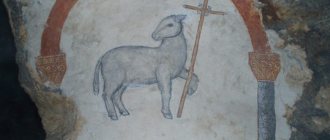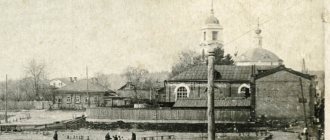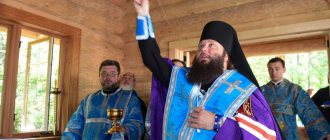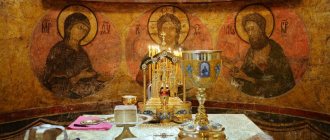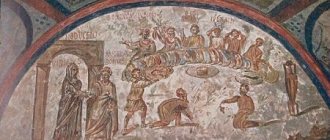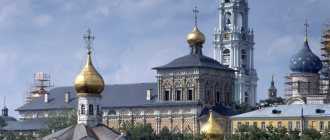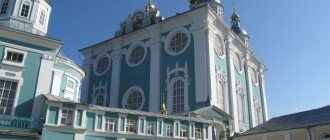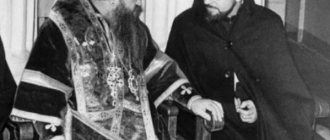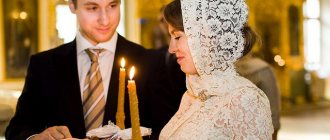Architectural lighting of the temple
The emotional atmosphere inside the temple should also correspond to the light environment around it. Architectural lighting of the church does not tolerate anything bright, flashy, or excessive. Lighting designers are faced with the task of correctly and accurately “linking” the external lighting with the symbolism of individual parts of the structure and the entire temple as a whole. It should be noted that the lighting of churches has both aesthetic and purely utilitarian purposes. It not only emphasizes the beauty and status of the object, but also improves visibility, spatial orientation, safety and visual comfort for many people attending early morning or evening services, as well as night holiday services.
Lighting options
As with all architectural lighting, there are two main directions in the lighting of churches. Light either helps to reproduce the daytime appearance of the object, or creates a special, unique and inimitable night image, in which the most significant and interesting architectural elements are highlighted. The implementation of these approaches allows various types of lighting accepted in the modern practice of architects and designers.
General flood lighting is the simplest option, when powerful spotlights mounted on the ground or stands flood either the façade or (in a 360-degree view) all sides of the building with light.
Local (accentuating) lighting emphasizes individual decorative and plastic details, expressive fragments of the structure, as well as landscaping elements of the surrounding area (lawns, flower beds, pedestrian paths). Sometimes key elements are even highlighted in a different color to draw special attention to them. Accents can be made on windows, cornices, arches, columns, balconies, domes, crosses, on a bell tower or bell tower, at the entrance with facade iconography. For local lighting, wall and ground lamps and low-power spotlights are used, as well as devices placed on decorative supports.
The background fill is directed from the background, emphasizing the monumental outline of the building. As a rule, these options are not used in “pure form”, but in various combinations, when flood lighting is combined with local lighting, and background filling is complemented by light accents. This allows you to convey the overall volumetric-spatial shape of the building and highlight its main advantages.
Lighting requirements
Despite all its specifics, the external lighting of churches is subject to the same standards as other architectural objects. SNiP 23-05-95 (section “Architectural, shop window and advertising lighting”) specifies only the basic lighting parameters and rules.
- The average brightness of the façade is up to 10 cd/m2, the average brightness of landscape elements is no higher than 4 cd/m2.
- Illumination of the area in front of the entrance to the building is 6 lux, pedestrian paths, alleys are 3-4 lux.
- Color rendering index not lower than 80 Ra
- The degree of protection of lamps from the environment is at least IP65.
- Lamps with a power of more than 150 W must have light-shielding devices to protect against dazzling pedestrians
- Lamps installed on the ground are equipped with protective decorative covers.
Russian Orthodox Church
On November 11, 2011, His Holiness Patriarch Kirill of Moscow and All Rus' consecrated the cross on the dome of the Church of the Apostle John the Theologian under Elm on New Square in Moscow. The temple, built in 1825-1837, is now the home church of the Russian Orthodox University and the Orthodox Institute of St. John the Theologian.
The mayor of Moscow S.S. was present at the service. Sobyanin, Head of the Moscow Department of Cultural Heritage A.V. Kibovsky, rector of the Russian Orthodox University, rector of the church, hegumen Peter (Eremeev), dean of the Pokrovsky district of Moscow, dean of the faculty of church ministry of the RPU, Archpriest Gennady Nefedov, representatives of the capital's mayor's office, teachers and students of the RPU.
His Holiness Patriarch Kirill addressed the audience with a welcoming speech, in which he touched on the history of the Church of St. John the Evangelist near Elm, where the Museum of the City of Moscow was located for many decades.
“Exactly 19 years ago the temple was transferred to the Church, but it was this year, with the active participation of the mayor of Moscow Sergei Semenovich Sobyanin, that this difficult stage in the life of the temple finally ended - and it ended very correctly, fairly, wisely, when those who were temporarily in it church, moved to premises that were allocated specifically for the needs of the Museum of the City of Moscow,” His Holiness emphasized. “Thus, no one suffered, and everyone benefited—the museum, which received the appropriate space, the Church, and historical justice.”
“I think that with the restoration of churches, with the revival of the historical, cultural, architectural values of our city, both love for the city and a sense of national identity will be strengthened, without which it is impossible to successfully overcome the difficulties facing our people and country today,” the Primate said and thanked the mayor and the Moscow government for “decisive actions” aimed at restoring the historical appearance of the temple.
“I am also happy for our Russian Orthodox University, which next year will celebrate its 20th anniversary, and I hope that this particular temple will become the spiritual center of the university and the venue for celebrations,” concluded His Holiness Patriarch Kirill, blessing the teachers and students of the Russian Orthodox University. “God grant that with the consecration of this temple a new page in the life of the university begins.”
In turn, S.S. Sobyanin expressed hope that restoration of the interior of the temple complex will soon begin.
After the prayer service, the cross was erected on the dome of the St. John the Theological Church.
His Holiness Patriarch Kirill, accompanied by A.V. Kibovsky and abbot Peter (Eremeev) examined the premises of the lower and upper temple and adjacent buildings.
Then there was a short conversation between His Holiness and the university teachers. His Holiness the Patriarch expressed his wish to hold a meeting with the university staff in the near future and discuss issues of further development of this educational institution.
***
Church of St. John the Evangelist under Elm
The first stone church on this site was built in 1658 (instead of the wooden one from the end of the 15th century). The new temple, square in plan, topped with a rotunda, was built in 1825-1837. in the style of late Moscow classicism. The centric composition of the new church is typical for churches of the first third of the 19th century. Adjacent to the temple from the west is a four-tiered bell tower, the lower tier of which is a vestibule (1845-1855). In 1855, a one-story building with a staircase leading to the 2nd tier of the church was added to the bell tower from the west.
In 1920-1930 The building houses a museum. At the same time, the completion of the temple was dismantled: the drum, the head of the dome, as well as the spire of the bell tower.
Decree of the Moscow Government of August 26, 1992 No. 661 “On the transfer to the Russian Orthodox Church (Moscow Patriarchate) of churches located on the territory of Kitay-Gorod” provided for the transfer of a complex of buildings of the Patriarchate for free use, as well as the transfer of buildings to the balance of the Department of State Security Control and use of historical and cultural monuments of Moscow. However, this resolution was not implemented.
In accordance with the order of the Moscow Government dated October 23, 2003 No. 1945-RP, the complex of buildings at the specified address is classified as property of the city of Moscow.
Over the past few decades, the buildings of the complex have housed the State Cultural Institution of the City of Moscow “Museum Association “Museum of Moscow””.
By decree of His Holiness Patriarch Kirill dated September 16, 2010, a Patriarchal metochion was created at the Church of St. John the Evangelist in Kitay-Gorod. The rector of the Patriarchal Metochion, Hegumen Peter (Eremeev), was entrusted with the work of organizing the return of the facility to the Patriarchate with the aim of further housing the Russian Orthodox Institute of the Apostle John the Theologian.
In accordance with the instructions of the Mayor of Moscow S.S. Sobyanin, given at an operational meeting on May 6, 2011 on the issue of restoration of a cultural heritage site, the Moscow Department of Cultural Heritage determined a program of necessary work.
By October 1, 2011, the museum vacated the occupied space in the temple and the adjacent building. Other buildings of the temple complex will be vacated by the end of this year.
The first divine service in the church over the past 85 years was held on October 9, 2011; from that moment on, divine services have been held regularly on Sundays and holidays.
Press service of the Patriarch of Moscow and All Rus'
